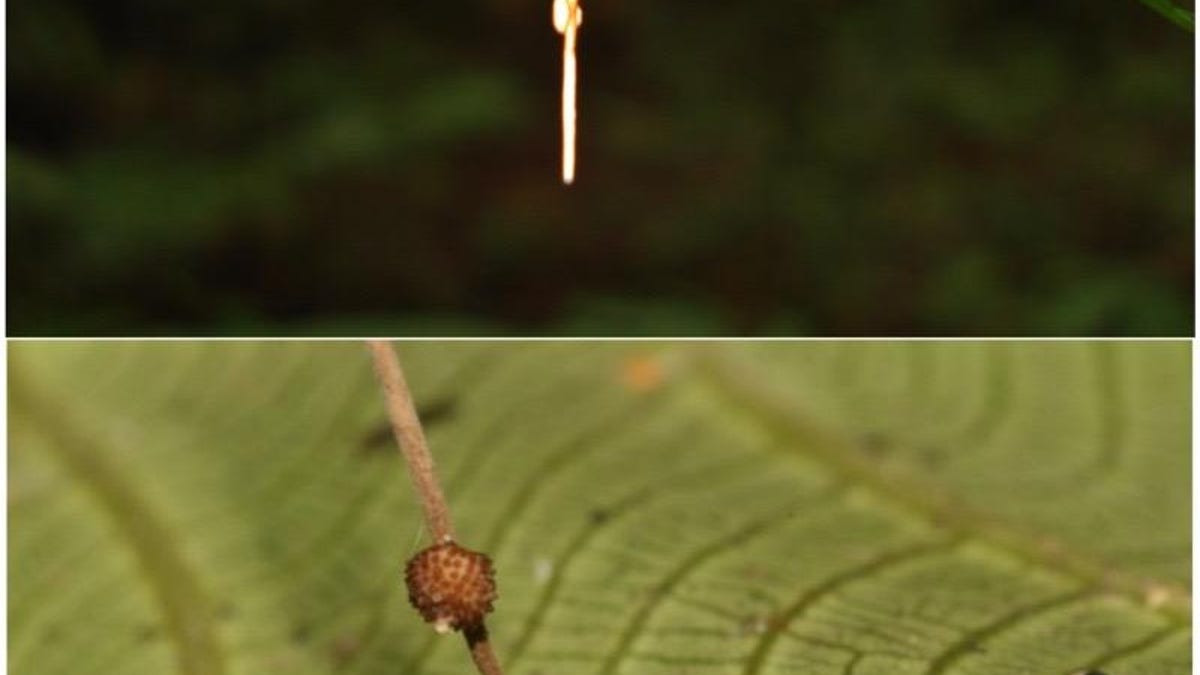Fungal parasite controls muscles, turning ants into zombies
New study that uses 3D visualization and deep learning shows that "zombie ant fungus" controls the insect's muscles, not the brain.
Imagine if a parasite entered your body, surrounded your muscles and then took control of your behavior as though you were nothing more than its meat puppet.
This may sound like the plot for a horror film, but it's actually Mother Nature at work. Luckily for us humans, this kind of parasite is only attacking insects -- specifically ants.
"Zombie ant fungus," known to scientists as Ophiocordyceps unilateralis, is a fungal parasite mostly found in tropical forests. The parasite was first discovered way back in 1859 by British naturalist Alfred Russel Wallace.
After the parasite infects a carpenter ant, it takes control of the ant's body, often making the ant use its mandibles to bite into the underside of leaves, where they die.
For up to 10 days, the fungal parasite continues to grow inside the ant's body until it eventually pierces through the ant's head, and releases deadly fungal spores that will then infect more ants.
Terrifying to be sure, but this is hardly newsworthy -- unless you read the new research published online on Nov. 6 in "Proceedings of the National Academy of Sciences."
Previously, scientists believed the parasite used the ant's brain to guide its movements. But in a new paper, the research now indicates the parasite surrounds the ant's muscle fibers, not the brain, to control the insect's body.
Penn State scientist David Hughes, who co-wrote the study, and his team infected ants with O. unilateralis to study the ants' behavior after the fungus took over.
Using electron microscopy and 3D reconstructions, Hughes' team discovered the fungal cells were interconnected, creating an extensive network that directed the ants' movements.
"These findings alter the current view of parasite-extended phenotypes by demonstrating that behavior control does not require the parasite to physically invade the host brain and that parasite cells may coordinate to change host behavior," the paper states.
The team also used artificial intelligence and machine-learning algorithms to further study and analyze their data.
From there, the scientists learned that the fungal parasite could maneuver the ant's head, thorax, abdomen and legs without entering the brain itself. "In essence, these manipulated animals were a fungus in ants' clothing," Hughes said in a statement.
If that wasn't creepy enough, another paper published in PLOS One on Nov. 3 by University of Central Florida entomologist Charissa de Bekker, explores the effects from fungal parasites even further.
Three-dimensional reconstruction of fungal networks surrounding muscle fibers. A single fiber of an ant mandible adductor muscle (in red) surrounded by 25 connected hyphal bodies (in yellow).
Her paper "Daily rhythms and enrichment patterns in the transcriptome of the behavior-manipulating parasite Ophiocordyceps kimflemingiae" (also co-authored with Hughes) takes a closer look at the molecular clock of the parasite.
Bekker found that the fungal parasite activates certain genes during the day and others during the nighttime, implying that the fungus uses precise timing to control its host. While this study sounds more like a nightmare than science, there are possible practical future applications.
"This will lead to a better understanding of the pathways and timing that lead to key parasite-host interactions that are taking place," Bekker's study states in its conclusion. "Such an understanding may eventually support development of more effective strategies for the biological control of insect pests."
Tech Culture: From film and television to social media and games, here's your place for the lighter side of tech.
Special Reports: CNET's in-depth features in one place.


